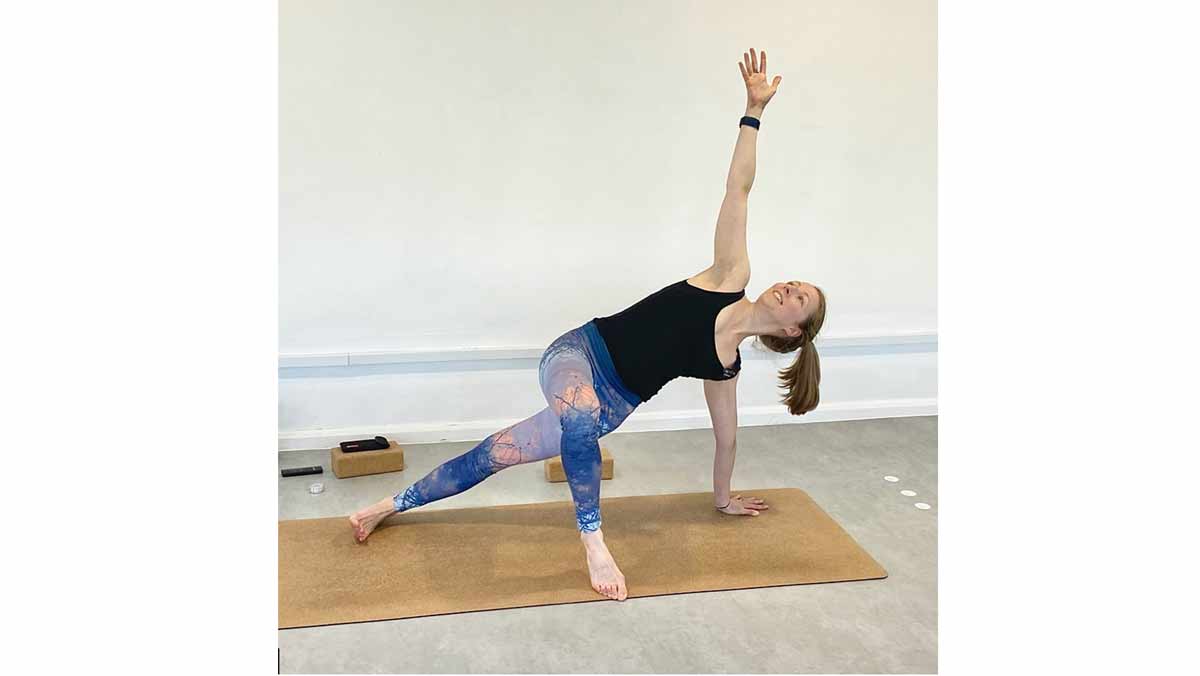YOGA READING BLOG
From resolution to rebellion, ritual and routine

Confession time, and rebellion!
Despite best intentions, I’ve always struggled with establishing a regular self-practice in any traditional sense. On my first teacher training, we were expected to practice daily between training weekends. I thought it meant I had to do a full 60 or 90 minutes every day and anything less didn’t count. Between working a full-time job (and a rebellious resistance to having another “thing” on my to-do list) this wasn’t a recipe for success. I just preferred live classes, but couldn’t make that a daily event.
Eventually, I learned that a self-practice doesn’t have to be any set length or have to involve unrolling a mat or making any shapes (asana). You see, “yoga” is about being present in connection to yourself, paying attention and allowing for space between thoughts. It doesn’t have to take any specific form. It doesn’t require you to balance on your head or stick your foot behind it, though I readily admit these things are good fun to try and can provide a rich ground for a valid practice. These days, my yoga practice can happen on the mat, while throwing weights at the gym, in tai chi class, upside-down drilling handstands, or watching the steam rise off a cup of Yogitea.
So, if you are looking to bring more yoga, movement or other pursuits into day-to-day, here’s some reflections and tricks from my most recent daily practice…
Getting started: from rebellion to routine and ritual
Always looking to refine my self-practice and find daily headspace, and also looking for ways to support shoulder rehab after a bike accident, I recently joined a 6-week online programme. The premise was incredibly simple: 10 minutes a day, 6 days a week, you alternate hanging and squatting. Easy enough, everyone has 10 minutes in their day, right? And yet, somehow there are so many obstacles to 10 minutes of self-care. Here’s what helped and resonated with me most from the process…
- Embrace compassionate consistency
We were encouraged not to beat ourselves up if we missed a day, but also to try not to ‘miss twice’. In other words: be consistent, yet compassionate. Sure enough, it was an effective model – in the first two weeks I managed 4 days of 6; I knew that was OK but not what I was aiming for. So for week 3 I set myself a target of 5 days out of 6, and from there I was soon up to a full 6 session weekly quota.
- The power of little, yet often
Each Monday the coach released some new (usually hideous) drill duo to increase the challenge to grip strength and hip mobility (and in my case, ability to procrastinate). Usually these felt impossible to begin with: shrugging your shoulders while hanging from just one arm? Cat/cow in malasana? But usually by midweek each week – even with missed sessions and only 10 minutes daily – the new drill would start to land in my body, as neural pathways formed. (Shout out to the human capacity for adaptation, which is just phenomenal). By the end of the programme, with minimal time commitment, I was shocked at how much I’d gained in strength and mobility.
- Create ritual over routine
I really loved this: we were encouraged to make a “moment” of each session. In other words, to set up your 10 minutes in a way that makes it somehow special to you – personalise it, pick your location, soundtrack, time of day. A quality of ritual, rather than routine. Making each session something enjoyable and present, rather than mundane and autopilot. For me this mindset recalibration (on most days) also significantly limited my desire to procrastinate. I looked forward each day to my 10 minutes of me-time, quite literally just to hang around and do diddly squat! By week 6 I had a new daily movement practice, formed completely without beating myself up. A triumph of ritual over routine or resolutions!
- Celebration and accountability
We were encouraged to share our personal stylings, successes and struggles with the group. Knowing we were in it together and having gentle reminders to have our daily moment really helped keep momentum. So, if you can, find someone to share the journey with, either to walk along with you or as an interested onlooker, I highly recommend it!
I hope this gives you inspiration to make a small rituals for positive change, whatever your goals and to celebrate every step you take on the path.
Helen
